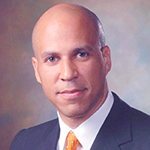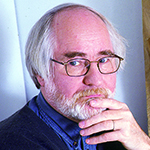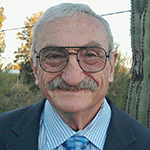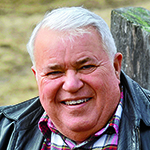Washington University in St. Louis will award six honorary degrees during the university’s 152nd Commencement May 17.
During the ceremony, which will begin at 8:30 a.m. in Brookings Quadrangle on the Danforth Campus, WUSTL will bestow academic degrees on approximately 2,800 members of the Class of 2013.
Cory A. Booker, the mayor of Newark, who is credited with helping revitalize New Jersey’s largest city with his hands-on and innovative approach, will deliver the Commencement address and receive an honorary doctor of laws degree from WUSTL.
The other honorary degree recipients and their degrees are:
- Marilyn Fox, civic leader, philanthropist and community volunteer, doctor of humanities;
- Martin L. Mathews, president, CEO and co-founder of Mathews-Dickey Boys’ & Girls’ Club, doctor of humanities;
- Juhani Pallasmaa, a Finnish architect, educator and critic and a leading international figure in contemporary architecture, design and artistic culture, doctor of art and architecture;
- Peter Rosen (MD ’60), one of the international leaders in the field of emergency medicine and one of the pioneers and founding fathers of the specialty, doctor of science; and
- Howard Wood (BSBA ’61), co-founder of two of the nation’s most successful telecommunications companies: Charter Communications Inc. and Cequel III LLC, doctor of laws.

In his second term as Newark’s mayor, Booker has been instrumental in more than doubling the rate of affordable housing production; creating the city’s largest expansion of parks and recreation spaces in over a century; and bringing more than $1 billion of new economic development into the city, including its first office towers and hotels in decades.
A 1994 Rhodes Scholar and 1997 Yale law graduate, he has attracted national attention for his education reform efforts to improve city schools; public safety initiatives to reduce crime; and innovative programs to help men and women leaving prison find jobs and reconnect with their community.
Booker also has gained wide attention for implementing new technologies in the city, ranging from creating the state’s largest wireless network of crime-fighting technology — including cameras and gunshot detection — to using social media platforms such as Twitter and Facebook.
An avid social media user, Booker has more than 1.3 million followers on Twitter.
Booker has been recognized by numerous media outlets, including The New York Times Magazine, Esquire and Time, which selected him to its 2011 Time 100, the magazine’s annual list of the 100 most influential people in the world.
As mayor, his personal involvement in helping improve life for his constituents has ranged from living on a “food stamp” budget for seven days to raise awareness of food insecurity, shoveling the driveway of a elderly man who requested help via the mayor’s Twitter feed, inviting Hurricane Sandy victims into his home, and saving a woman from a house fire.
Booker earned a bachelor of arts in political science in 1991 and a master of arts in sociology in 1992, both from Stanford University, where he returned in 2012 as its commencement speaker.

For more than half a century, Mathews has dedicated his life to community service. A champion for youth, he co-founded a club initially designed to provide structured recreational activities to young men in his north St. Louis neighborhood.
Today, the Mathews-Dickey Boys’ & Girls’ Club provides cultural, educational and athletic programs to a diverse population of more than 40,000 young men and women, ages 5-18, throughout the St. Louis-metropolitan area.Many of these youth hail from low- to moderate-income families.
By forging relationships with business and civic leaders and developing innovative programs, Mathews helped create a national model.
In 1960, while coaching a boys’ baseball team, Mathews met another neighborhood youth coach, the late Hubert “Dickey” Ballentine.
The men shared a mutual concern: keeping young men on the fields and off the streets.
From that meeting, came a baseball league, then a small storefront building for club meetings, to eventually, after a multimillion-dollar campaign, a facility equipped with an Olympic-size pool, basketball gymnasiums, community meeting and music rooms, computer and tutorial labs, and administrative offices.
In 1982, President Ronald Reagan dedicated the new facility, declaring it a model for the country, and presented the co-founders with the Presidential Citizens Medal.
Since then, the club has continued to grow in size and scope with such additions as the James “Cool Papa” Bell multipurpose outdoor athletic complex, a 19,000 square-foot Girls’ Program expansion wing and the Bob Russell Park in North County. In 2001, the club officially became the Mathews-Dickey Boys’ & Girls’ Club.
Among the programs offered to combat teen idleness and illiteracy are Computer Literacy Instruction, Urban Music, Summer Day Camp, “The Sky is the Limit” and “Maleness to Manhood Workshop Series.” These activities supply youth with education, cultural awareness, job training and mentors.
For his dedication to youth, he has received numerous honors, including A&E Biography Community Heroes, the FBI’s Director’s Community Leadership Award, the St. Louis Globe-Democrat’s Humanitarian Award and Focus St. Louis’ What’s Right with the Region! Award.

Pallasmaa

